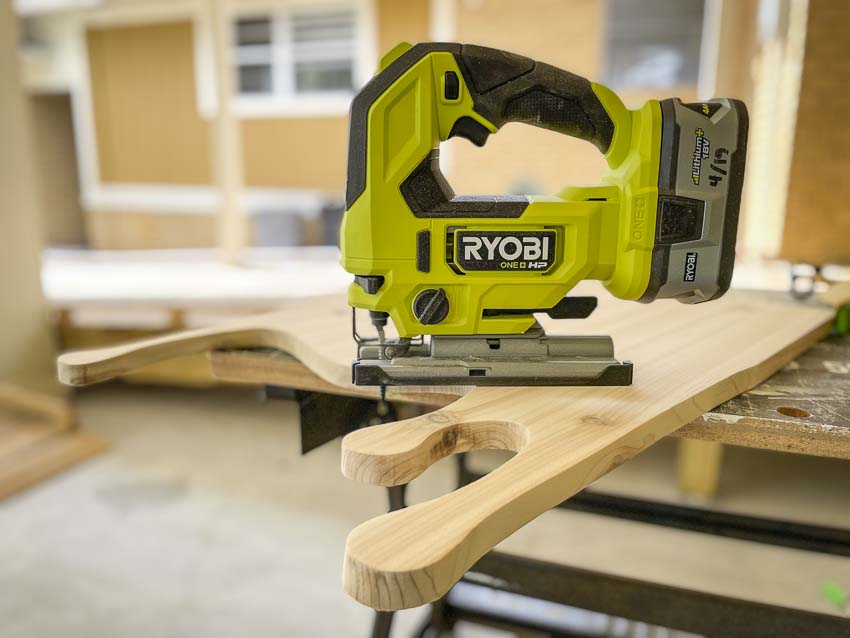Ryobi’s latest jigsaw, part of their HP line, majors on the majors.
The Ryobi PBLJS01 HP brushless jigsaw does everything I need a jigsaw to do. Its competitive pricing and Pro features make it worth a look.
Editor’s Note: Check out our best cordless jigsaw reviews article for our top recommendations.
Pros
- Plenty of power and cutting speed
- Easy blade-release lever
- Lock-on button and orbital adjustment
- Tool-free bevel change
- Access to 175 more tools with the One+ system
Cons
- No dust collection (for those who care about that)
- Variable speed adjustment dial instead of on the trigger itself
Ryobi HP Brushless Jigsaw Features
The Ryobi HP brushless jigsaw marks a clear but subtle update from the Ryobi P524 we reviewed several years ago. Inclusion in the Ryobi HP power tools line doesn’t seem to have changed the tool much in itself. In fact, according to the website, the max SPMs are down 100 from that previous model (from 3500 to 3400). That’s still plenty of speed for top-quality performance.
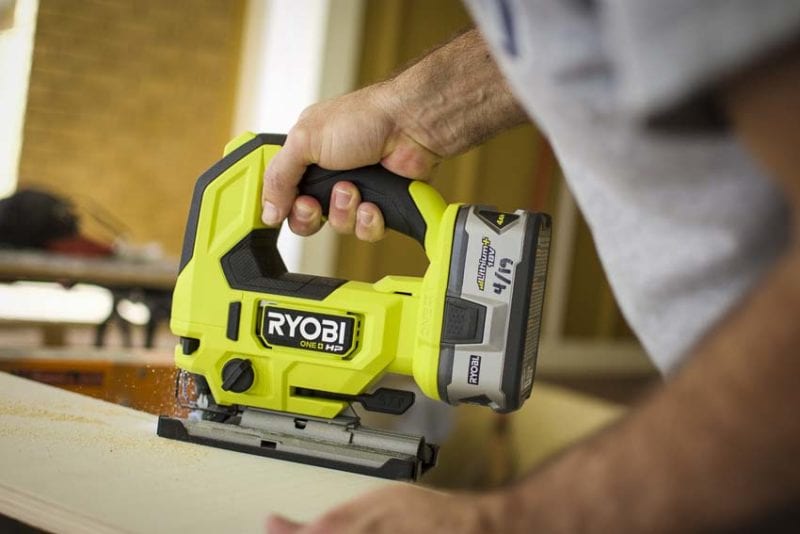
The most obvious update—and a good one—is the addition of an easy-release lever above the main blade clamp. This makes for a quick blade change without having to put my fingers awkwardly down by the blade mechanism itself.
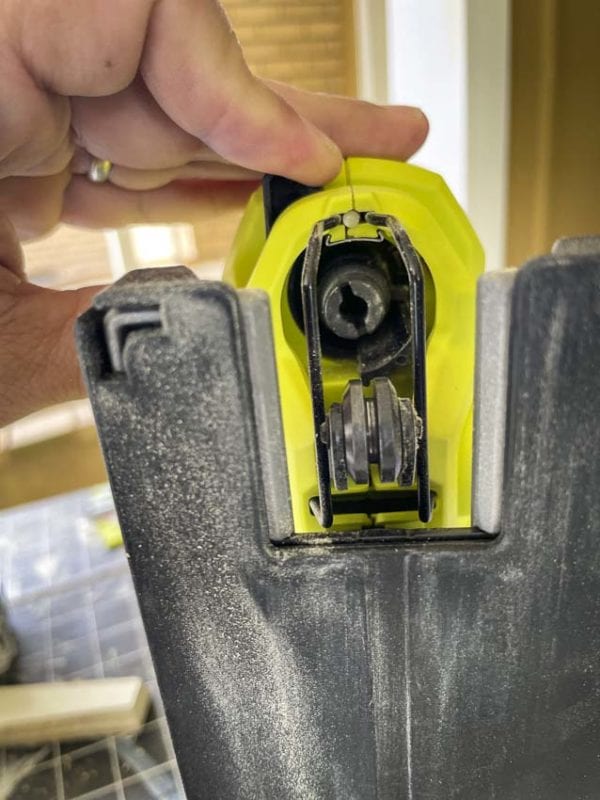
But take care. When you flip the clamp on the Ryobi PBLJS01 brushless jigsaw all the way open, a spring lock releases. This causes the blade to jump out of the clamp. If you’re working in an awkward spot or in dirt or grass where something can fall and easily get lost, make sure you already have your hands on the blade to pull it out before it jumps out and onto the ground.
When you pull the release lever back all the way, the clamp rotates and the slot for the blade moves slightly past 90 degrees. It didn’t hinder loading the blade. It did, however, give me pause as to whether the blade would seat squarely on the guide wheel. The T shank fits in solidly and upon releasing the lever, the blade locks right into place.
A Cleaner Look and Variable Speed Dial
The Ryobi PBLJS01 jigsaw’s only other discernible change from the previous model is a color swap from metallic gray to black for the various buttons and levers. It gives the saw a nice, clean and solid look.
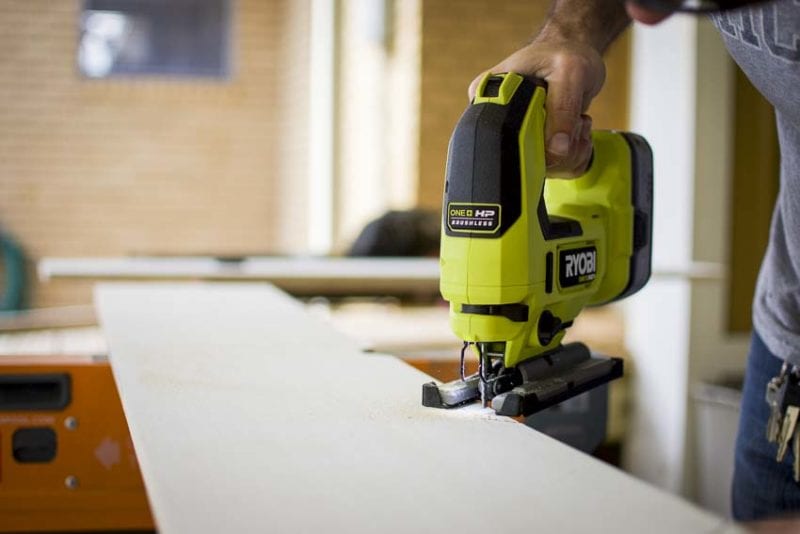
Blade speed on the saw is still governed not by a variable trigger. Instead, Ryobi gives you a dial on the very top of the saw. This is not my favorite setup for “on-the-fly” adjustment. I prefer to have my thumb down helping to balance my grip rather than poised on top to make speed adjustments. Moving my thumb in the middle of a cut risks moving the saw too.
The lock-on button, located on the top left of the handle, helps for longer runs. It also makes it easier to make those speed adjustments since you don’t have to keep the trigger depressed. Therefore, you have a bit more freedom with your hand. The button is only on one side of the saw so there’s no reaching it with your thumb if you use your left hand!
Ryobi HP Brushless Jigsaw Orbital Cutting Action
The orbital dial on the Ryobi HP brushless jigsaw has 4 stops (0-3). This gives you the option to cut faster, though with a rougher finish. The manual has a chart with suggestions for use depending on your application. Set to 0, the blade moves straight up and down. With a fine-toothed blade, it cut smoothly through 3/4-inch ply and left a nice clean finish on the top with minimal tear-out. Set to 3, the saw moved quickly through the same plywood but left a wave of chips and tears in its wake.
I also tried a few plunge cuts without incident and cut a clean line right through the middle of the board.
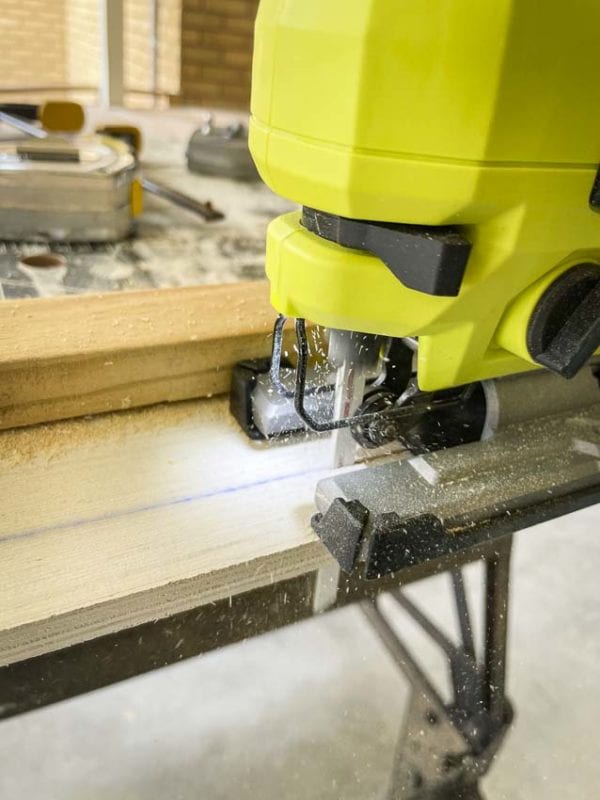
As with the previous model, the Ryobi PBLJS01 has a quick-release lever for making bevel adjustments but only has detents on the 45 (both left and right). Top-of-the-line models tend to have a few more. Cutting on the bevel worked great. The saw was stable and, again, working through plywood, left a nice clean finish on top and a 30-degree angle underneath. That said, I’m not apt to use a jigsaw for major bevel cuts because of the small, flexible blade.
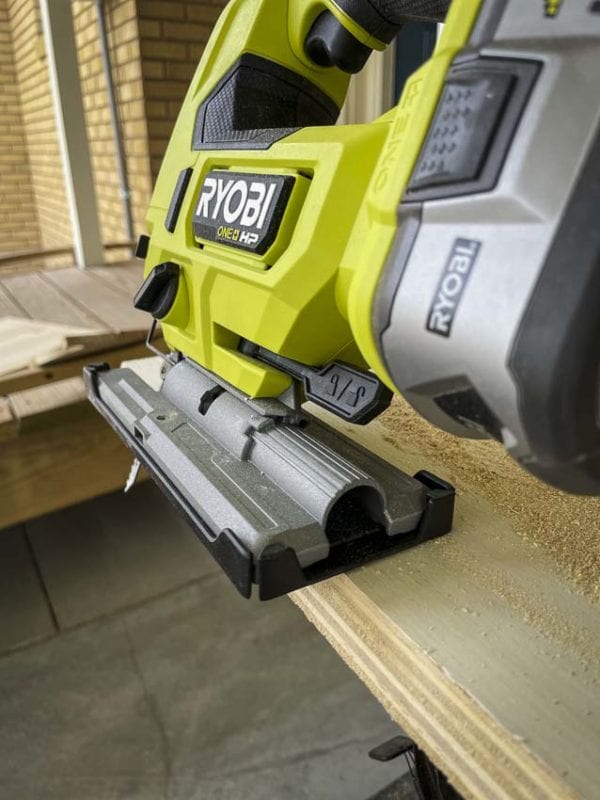
The solid die-cast metal base is covered with a nice non-marring shoe. It helps you avoid scuffing and scratching the surface of your material as you move the saw through your cut. This is great because I tend to draw my cut lines on the finished side of the wood.
The saw moves plenty fast and has lots of power for my taste. In my arsenal, I need a jigsaw for greater precision. For me, power and performance are all about making clean, stable cuts for a long time. In that department, this saw has everything I need.
Ryobi PBLJS01 Performance
My first couple of workouts with the saw were loads of fun. With a fine-toothed, narrow blade, it worked through sharp turns easily with little vibration to threaten the delicate piece I was working with. It felt good in my hand and made work seem easy, and I was super excited about the results. This is my favorite use for a saw like this. The full size, with a full base and weight, adds stability for making intricate cuts, and the non-marring shoe didn’t scuff the surface.
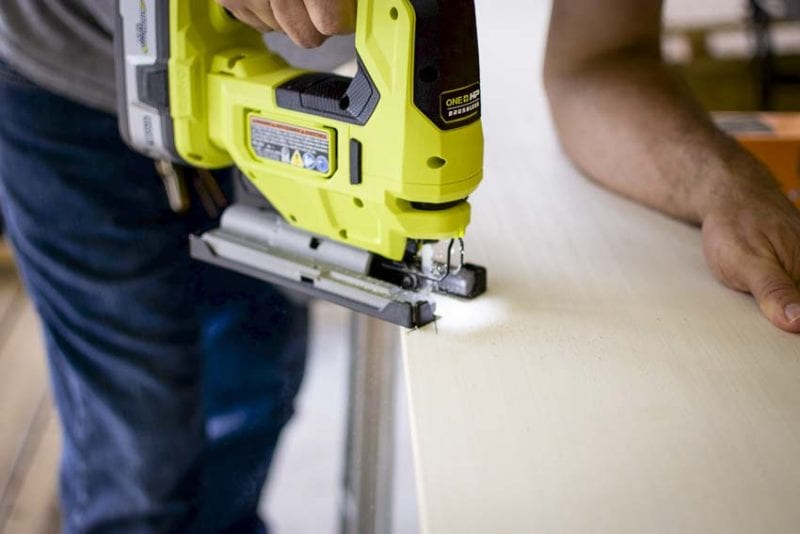
While I tend to like a small barrel-handled saw for quick notches, the Ryobi handled this task without a hitch. The saw doesn’t start immediately when you depress the trigger, so be careful to make sure you’re in the right spot for your cut. I like to keep the blade right up against the board. The plate extends out enough beyond the blade so it was easy to keep level and straight even though I was hanging off the end of a board.
The lock-on button is nice to have for longer cuts. I could keep my eyes on the line, which was free from dust and well-lit by the LED.
Room for Improvement?
One of the glaring features the saw seems to be missing (beyond additional bevel detents) is some kind of dust collection system. But, in my opinion, this is a smart choice on Ryobi’s part. A jigsaw needs to be free to move back and forth over the working piece.
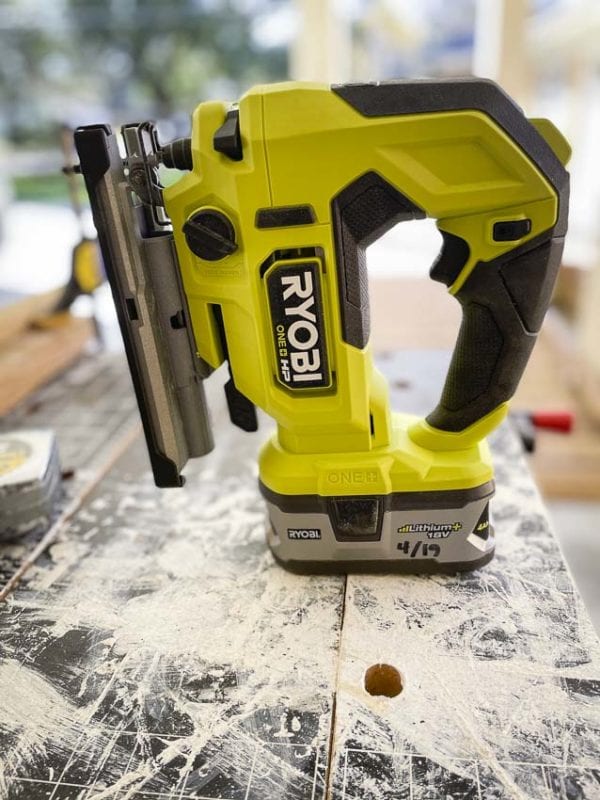
My first cordless was a dream come true as I no longer had to keep track of the power cord as I worked the angles. I’m often up against a clamp or a brace because I want the piece nice and stable for curvy cuts. Having a saw with a bag or a tube sticking out the back sounds like an annoyance at the least and a non-starter for a lot of cuts. I work outside, so I’m not as concerned about dust accumulation. However, from my perspective, we’re not missing anything by not having this feature.
The Bottom Line and Pricing
Ryobi’s got a good thing going. They’ve majored in the majors and while the saw lacks some of the features of the top-of-the-line (more detents and dust collection), these omissions are NBD in my book. The bare tool is definitely competitively priced at $129.
Features Overview
- Brushless motor provides up to 36% faster cutting and up to 78% longer runtime compared to P5231 when cutting 1/4″ plywood
- Easy release blade lever for quick blade changes
- 4 orbital settings for increased cutting versatility
- Variable speed dial for ultimate cutting control, ranging from 800–3,400 SPM
- Tool-free bevel adjustment for easy bevel changes, with locking detent at 45° left and right
- Die-cast metal base for increased durability with included non-marring shoe
- On-board LED worklight illuminates workspace for clear cut line visibility
Ryobi 18V HP Jigsaw Specs
- Model: Ryobi PBLJS01B
- Motor: Brushless
- Stroke Length: 1″
- Strokes per Minute: 800 – 3,400 SPM
- Bevel: 0-45º left and right
- Warranty: 3 years
- Price: $159

